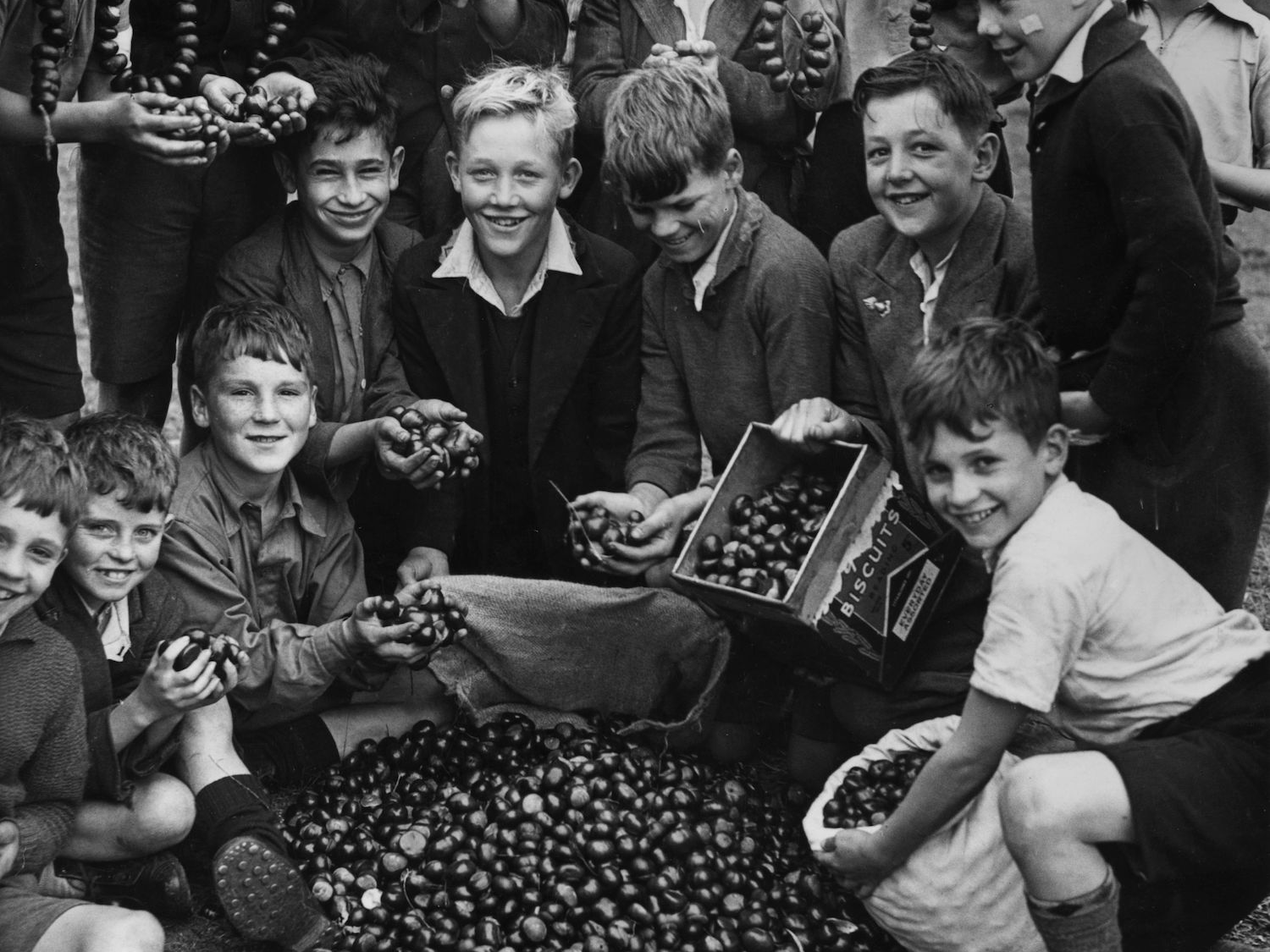- Chestnuts were once an important part of Appalachian history.
- The chestnut tree dominated the Appalachian region – one Virginia county alone exported 160,000 pounds of chestnuts in 1910.
- They were such a big part of life in the Appalachia, they were used as currency.
- According to historians, children would gather nuts to buy shoes for school, and adults would use chestnuts to pay property taxes.
- Country store owners would then sell them to produce wholesalers to distribute the chestnuts to cities in the Northeast US like Philadelphia and New York.
This story was originally produced forEndless Thread, a podcast from WBUR in partnership with Reddit:
Maybe your only familiarity with chestnuts comes from Nat King Cole crooning about them roasting over an open fire. But chestnuts were once as American as Apple Pie. In Southern Appalachia, they were even used as currency.
Before a catastrophic blight wiped out the American chestnut tree in the early 1900s, the species dominated the eastern forests of North America, the “Redwoods of the East.” Appalachian folklorist Charlotte Ross says walking into a chestnut forest would have been like “walking into a cathedral.” And the gems of the trees were really the nuts themselves, cherished for their sweetness.
But to the folk of Southern Appalachia, the nuts weren’t just a delicious treat, according to historian Ralph Lutts.
"It was a central part of their lives economically, particularly the very poor. And when you had the time of plenty in the autumn when the nuts were falling like manna from heaven, it was almost a community celebration."
Ross says so many people were involved in chestnut harvests that it was actually a common place to meet your future spouse. The elderly participated as well, though they were often strapped to the backs of horses or mules via packsaddle, too frail to hike through the woods on their own two feet but reluctant to miss out on all the fun. The nuts were so plentiful, sometimes inches deep on the forest floor, that Lutts remembers a woman who once said "a chestnut grove is a better provider than a man, easier to get along with too."
But the chestnut was more than a celebrated bounty in those areas. It was literally used as currency. "Shoe money" it was called, since children would gather nuts to buy shoes and other clothes at the beginning of the school year.
Adults got involved as well, using chestnuts to buy goods they couldn't make themselves and even to help pay off property taxes. "Come September, October, the only commodity they're trading in at the country store to get their groceries is chestnuts," says Lutts.
In turn, the country store owner was the intermediary between those rural communities and the rest of the world, selling those nuts to produce wholesalers who distributed them to places like Philadelphia and New York City where chestnuts were a hot commodity. Vendors roasted and hawked the nuts on city streets, leading to their informal label as America's "first fast food." City people gobbled them up, especially during holiday season. "If the chestnuts were around [today], they'd probably be selling them on eBay or through Amazon," adds Lutts.
To give a sense of scale, Patrick County in Virginia exported 160,000 pounds of chestnuts in 1910, according to the US agricultural census. Lutts points out that this is actually a low estimate since the people providing these numbers were "rural folks who were a bit suspicious of the government." So, it's safe to assume there were a fair amount of unreported chestnuts in circulation.
Even in 1910, though, chestnut blight had already taken hold in the Northeast. In an unfortunate twist of fate, it reached Southern Appalachia right around the time the Great Depression hit. It was a "catastrophe," says Lutts, who recounts someone who said that "when the trees started dying it felt as if the whole world was dying."
The economy recovered, of course, but it was never the same. The industrialized world successfully encroached on subsistence farming, the loss of a way of life.
Even though the trees died, Lutts says they still hold "mythic significance" in that region, a symbol of nostalgia for old way of life. Stories of chestnut harvests past were passed down over the generations and historians like Lutts and Ross seek them out and make sure they don't fade with time.
Outside of that region, chestnuts faded from cultural relevance, now mostly relegated to the dulcet tones of Nat King Cole's annual reminder.
Subscribe to Endless Thread with Apple Podcasts, Stitcher, RadioPublic or RSS and follow them on Twitter @endless_thread.You can also follow author Josh Swartz on Twitter at @joshbswartz.

